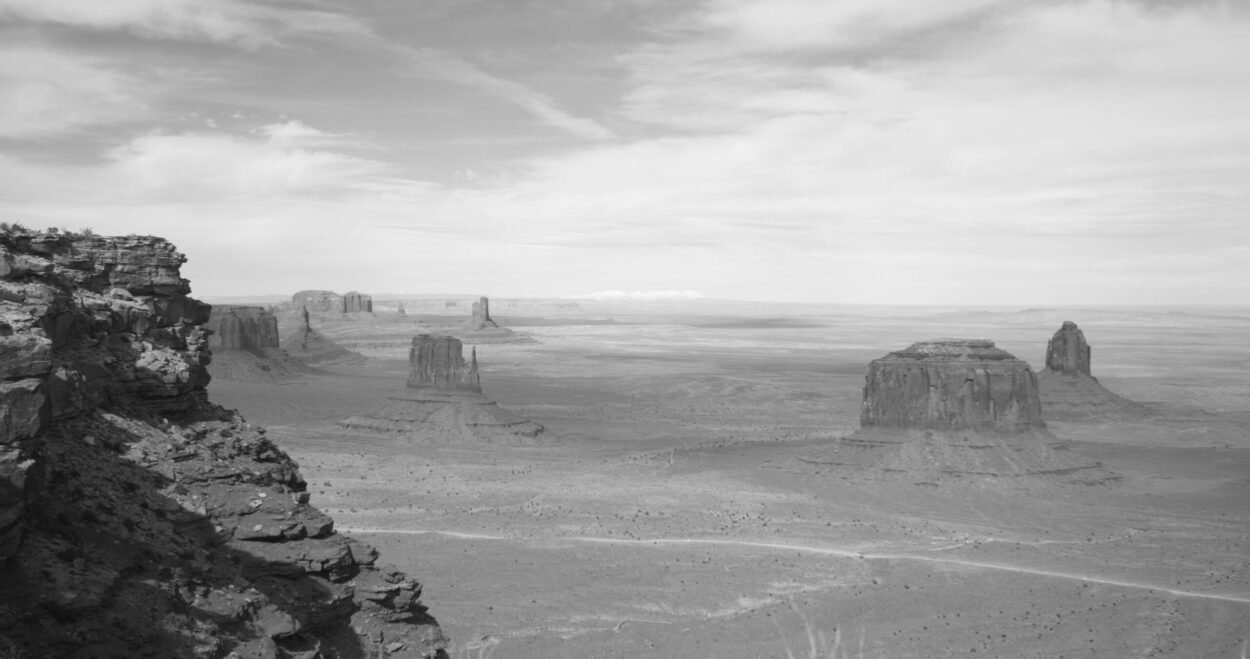“Demon Mineral” - Documentary Film Review
This review was originally posted on Film Obsessive.
The Atomic Age has been front of mind for filmmakers in the past year. Oppenheimer was a blockbuster (a term that also has roots in the Atomic Age) success that is now collecting nominations from critics organizations around the world. Godzilla Minus One is an answer of sorts to Christopher Nolan’s biopic of J. Robert Oppenheimer, as the monster has become a longstanding metaphor for the effects of the nuclear bombs dropped on Hiroshima and Nagasaki. Both films are epic in scale. Large, sprawling movies that clearly portray the power and destruction that lie in nuclear energy. By contrast, one could say that Slamdance’s Demon Mineral is miniscule. There are no explosions, no brilliant flashes of light, no cities leveled to the ground in this documentary. Despite that, Demon Mineral looms large because it seeks to show the reality of living in the shadow of uranium mining and the fight Indigenous people are waging for the right to a safe place to live on their sacred, now radioactive, lands.
Demon Mineral is a documentary that was four years in the making. Director Hadley Austin documents the present-day life of Indigenous people living on land littered with abandoned uranium mines. It’s a personal story for her, as Austin spent fifteen years living in Flagstaff, Arizona, closely working with Diné (or Navajo) elders and other activists to fight for the protection of this sacred land. It’s the people Austin met during her time in Flagstaff who make up the focus of Demon Mineral. There’s Emma Robbins, one of the film’s producers, who grew up on the contaminated land and whose father worked to clean up the uranium mines. Dr. Tommy Rock, the film’s co-writer, was inspired to pursue a doctorate degree in Environmental Science after losing his grandfather due to health complications from working in the Moonlight Mine.
Photo: courtesy of Demon Mineral.
To many, the imagery of the American West exudes a feeling of freedom and possibility. That emotion may come from the stunning wonders that lie there. As someone who was born and raised on the East Coast, it’s staggering to view the wide open expanses with tall, natural monuments that jut out from the ground and seemingly touch the sky. The American West quickly became a brand new playground for Hollywood to explore. Western films reached the peak of popularity in the post-World War II era. As Demon Mineral explains it, these stories were “whitewashed, conquest tales about men who wanted to love the land but couldn’t because they wanted too much from it.” The Diné people have a deep, profound connection to the land. More than the basic human right of access to clean water and land free of radioactive materials, the land holds a sacred, tangible connection to ancestral people and traditions. It is not so simple to leave, nor should they be expected to. The burden falls on the United States government and its failure to keep its citizens safe.
Demon Mineral is presented starkly. The film is mostly shot in black and white, which takes the magic of the wonders of the west out of the equation. There’s nothing for the audience to focus on but the stories told by the film’s Diné community members. It’s a very specific choice not to tie the film up in a fancy presentation, because then the audience can’t ignore the reality of what the Atomic Age did to this land and its people. Cecil Joe, a truck driver, casually mentions that his sole job is to deliver water to people whose home water supply has been tainted. In other films, this statement would be lost on the audience as they watch the beautiful sky roll by from Cecil Joe’s truck window. In Demon Mineral, it’s one of many stark, plainly-laid-out facts of life.
Photo: courtesy of Demon Mineral.
In addition to the firsthand experiences of the Diné people, Demon Mineral is a tapestry of archival materials. There are still images, news articles, academic and scientific journals, C-SPAN footage, artifacts from Marie Curie’s life work, job advertisements to work in the mines, and more. One of the strangest pieces is a series of photos of a woman doing ballet while a mushroom cloud grows and blooms in the distance behind her. As bleak as Nolan’s Oppenheimer is, it doesn’t hold a candle to Demon Mineral. There’s a haunting quality to those aforementioned ballet images, but it is by far not the only moment that makes the viewer want to pause the film and reflect on how contemporary and urgent this issue is, despite its lack of prevalence on the news. Demon Mineral is an onslaught of harsh reality, a reminder of the haphazard way our planet has been treated and who is bearing the consequences of that treatment.
Follow me on BlueSky, Instagram, Letterboxd, & YouTube. Check out Movies with My Dad, a new podcast recorded on the car ride home from the movies.


